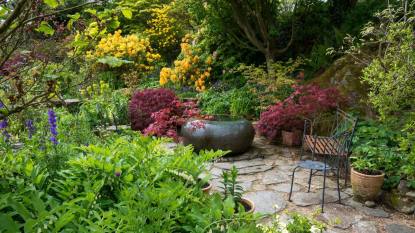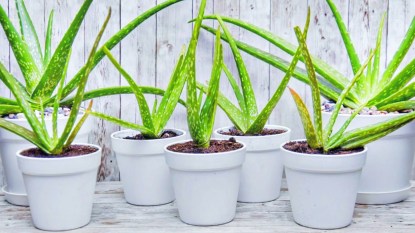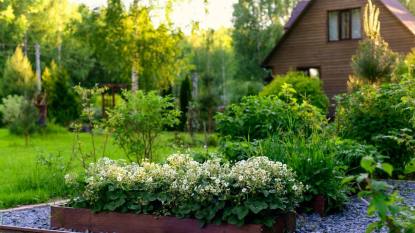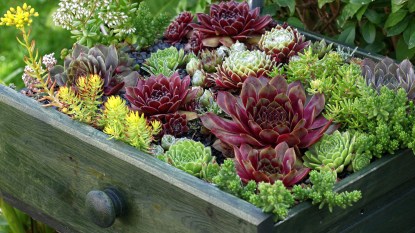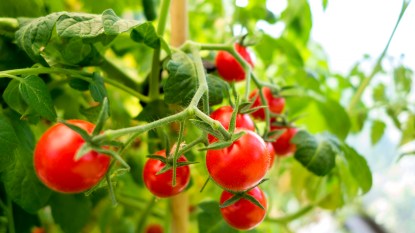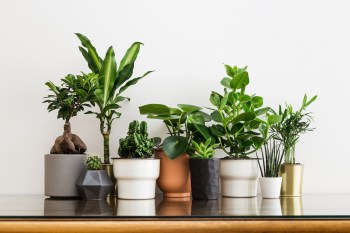Gardening Pros Share How to Easily Fill a Raised Garden Bed for Less
Learn how sod, twigs, pots and more can help!
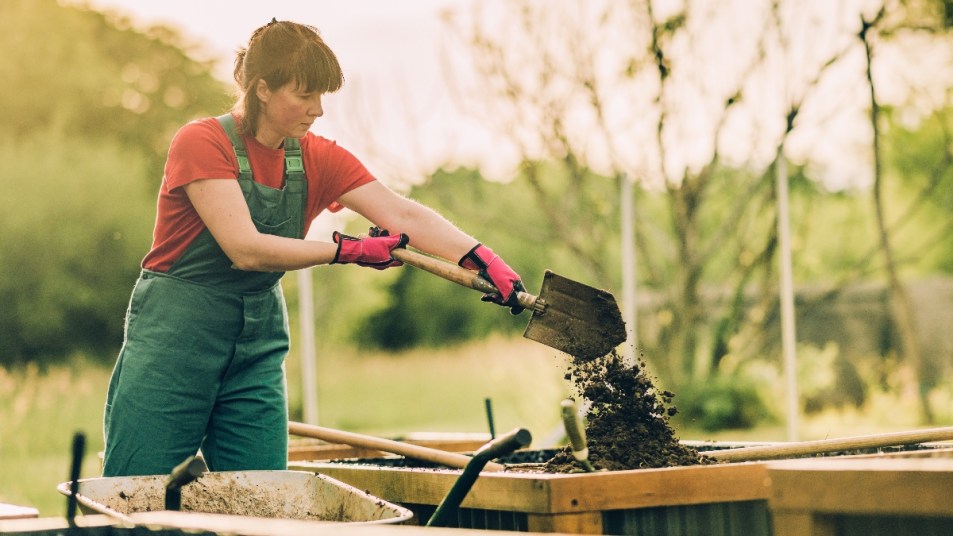
When you’re short on space or don’t have an ideal outdoor environment for gardening, a raised garden bed is a must! Most often made of plastic, metal or wood, raised garden beds are a popular option for gardeners of all skill levels. You may be wondering, however, just how to fill a raised garden bed. Below, you’ll find the keys to doing so, easy ways to make it more affordable and what to do for a raised bed every gardening season.
How to fill a raised garden bed

Once you have a store-bought or homemade raised bed ready to go for your plants, the next step is figuring out how to fill it! To ensure your plants have the proper nutrients, you can combine bags of compost and top soil together for an ideal blend. (Tip: Combine the contents on a tarp fist before adding to your bed. This will allow you to better mix them together without having to step inside the structure.)
Not sure how much soil you need? Multiply the width, length and height of the bed in inches. Then divide that number by 1,728; this will tell you the amount of cubic feet. As most bags are sold by the cubic foot, this makes it easy to calculate the number you need to buy.
Also smart: “Keep in mind that if you have hard-packed or clay soil underneath your raised bed, you need a depth of at least 12 inches so the plants have room to grow in the raised bed itself,” shares Tara Nolan, author of Raised Bed Revolution.
How to fill a raised garden bed for less

It’s no secret that store-bought soil can be pricey, especially when you need a large haul of bags for multiple beds! Luckily, there are ways you can make the process of filling your raised bed more affordable. Consider one of these clever options:
Use sod to fill a raised garden bed
“My newest raised bed (it’s a green galvanized model) is deep,” shares Nolan. “I dug out some of my front lawn to make the new garden area around it, so I put the sod to use. I turned it upside down and used it to fill the bottom of the raised bed. That meant I didn’t need as much soil.”
Toss natural elements into your raised garden bed
One of the easiest ways to save money is by adding a lot of natural elements to your bed before the soil. “First line the bottom with cardboard, then add a layer of wood, shares @2quacks5clucksfarm on TikTok in the video below. “Top that with a layer of leaves. Last, you want to add 6-8 inches of compost-rich soil.”
The cardboard will help keep weeds from growing in the bed, while the leaves and sticks will eventually break down and add to the soil. In the meantime, they’re great space fillers!
Add your own compost to your raised garden bed
Compost is a must for thriving and happy plants, but that too can be costly if you have to keep buying bags. “Having your own compost pile can help save money,” suggests Nolan.
See how easy it is to do with just a 5-gallon bucket in the video below. Then next year, you’ll have plenty of compost for your bed! (Another way to use a bucket in your garden? Growing potatoes! Click through to learn how to grow potatoes in containers).
Grab extra pots for your raised garden bed
If you have a particularly deep bed or have many raised beds, you may struggle to find enough twigs and leaves to fill up some of the space. A clever alternative: spare planting pots!
“For a deep galvanized raised garden bed, I once saw the director of a botanical garden place pots upside down with boards on top so that only half of the raised bed needed to be filled,” shares Nolan. “He used clamps to line the new depth with landscape fabric, then added the soil and removed the clips once everything was in place.”
How to prepare a raised garden bed for new growth

The good news? Once you’ve filled a raised bed, you’re guaranteed to have hearty soil left for the next year. While this means you don’t have to start from scratch every spring, you should still give your bed a little TLC.
“Raised garden beds don’t need to be emptied at the end of the season, but they do need to be refreshed,” explains Nolan. “The plants that have been growing throughout the season will have used a lot of the nutrients in the soil to grow. Pulling out crops also removes some of the soil.”
For that reason, It’s best to add fresh soil and compost before you begin planting the next year to ensure there are plenty of nutrients available. You can also do this for succession planting (before the next seeds or seedlings) within the same season to help your greenery thrive. (Need to start seeds indoors? Find out how to germinate seeds!)
For more helpful garden tips, keep reading!
Budget Small Garden Ideas Transform Any Sized Outdoor Space Into a Green Oasis!
Channeling Elvis Before Gardening Prevents Pain + More Hacks That Block Aches Head to Toe
Grow Your Own Succulent Garden, Plus How To Grow New Succulents From Their Leaves!


